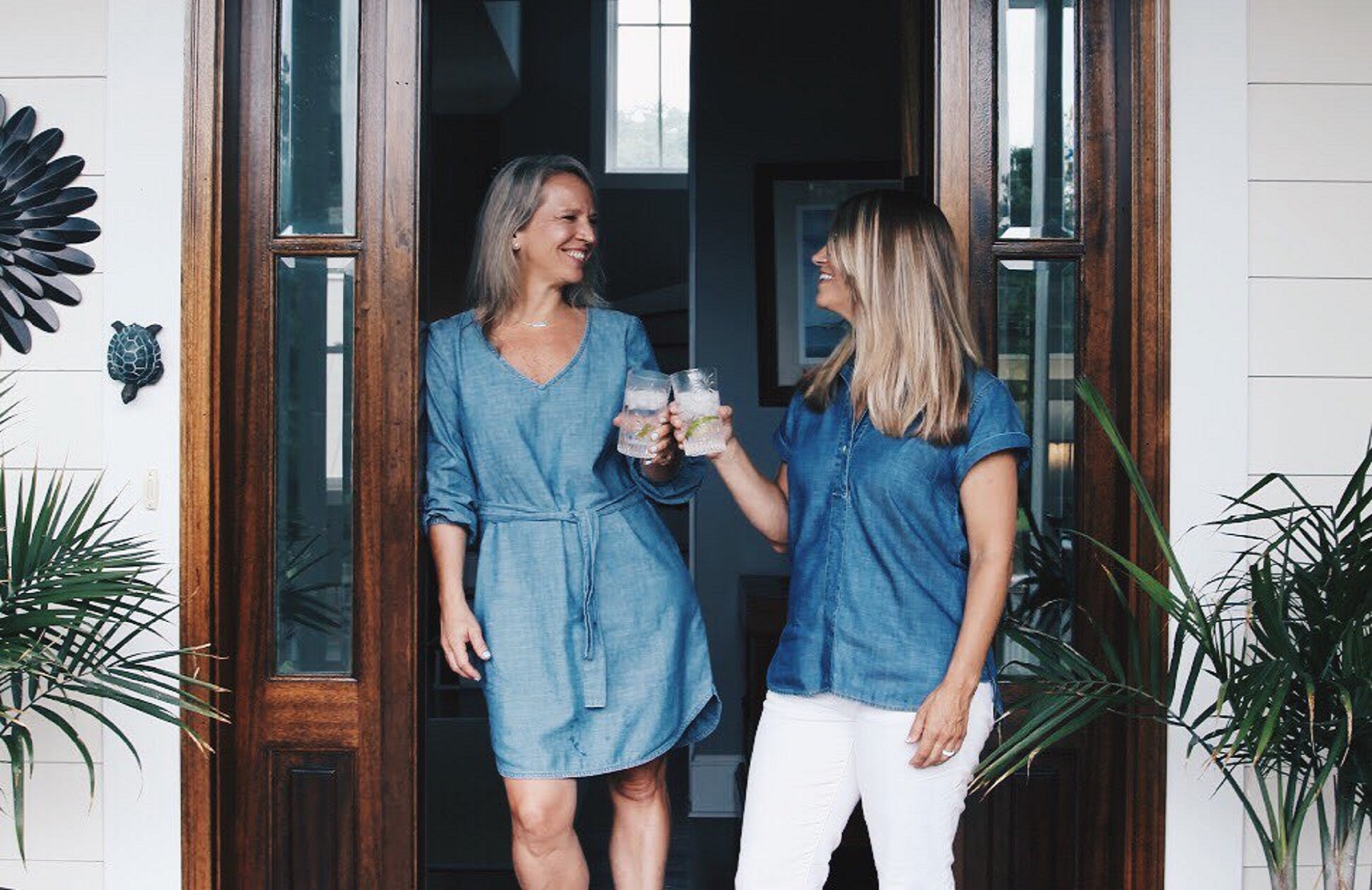Everyone talks about social media these days — everyone wants to ‘go viral.’ We think a viral video will solve all our problems, bring in an audience, bring in sales, help us grow. And all of that may be true — but most people don’t consider the cost of that growth. Sudden sales can be great, but too much too quickly can decimate a fledgling business. It takes a lot of preparation, hard work, and seriously agile thinking to keep up with the growth of a viral video. We should know; it happened to us.
With virtually no initial investment, here’s how we took one pillow product sample and a 26 second video (that we shot ourselves at home with our kids on our phone) — and turned it into $1 million in sales in 30 days. Yep. Really. But the hardest part was not making those sales — the viral video pulled those in. The hardest part was keeping our business afloat (and keeping our customers happy) in the process!
Our first product, a “mermaid pillow” for kids, existed only in our imagination in October 2016. The fabric, a soft, reversible sequin that ‘flips’ when you run your fingers over it, had existed for years, and “mermaid pillows” wrapped in this fabric had been created already. But we saw an opportunity to create a kids’ version of this “mermaid pillow,” so we sent an email to our manufacturer describing our idea — that we wanted these reversible sequins on the back of the pillow, and a soft cover for kids, with an actual illustration of a mermaid print on it.
Two weeks later, in early November, we got a knock at our front door from our mail carrier. Our 5- and 7-year-old rushed to the front door and ripped upon the DHL package that, in less than 72 hours, had traveled from China to Omaha. A few anxious seconds later, they unwrapped what has since become our best selling pillow: our *Imagine Mermaid Pillow.*
For the next hour, our kids were mesmerized. They drew words into the sequins; they played tic-tac-toe; and occasionally they even shared it with their younger twin brothers (occasionally — they were having a lot of fun themselves!).
The sample pillow was almost perfect. While playing with the sequins, our oldest daughter Alayna cooed, “I love the way it feels….” It just sounded so joyful, so authentic, that we thought, “Hey — let’s get that on video!”
This led us to scripting, shooting, and editing a :26 second video “commercial” with our iPhone, capturing how much our kids loved their new mermaid pillow.
That same night, we uploaded the video to Facebook. When we woke up the following morning, the video had been watched over 50,000 times. Four weeks later, it had been watched over 5 Million times. It spread almost entirely organically: friends sharing with friends, commenting, and liking it.
We had a viral video! Every business’s dream, right?
But with the success of our video, we also had a major problem. We had tens-of-thousands of customers wanting to order the mermaid pillow — and all we had was a single sample.
This is where your choices can make or break your success from virality. If we had sat back, overwhelmed, and just said we’d try again later — we might never have had the same chance. We might never regain those customers or sales. We had to take the opportunity before us.
So we came up with a plan. Using the e-commerce platform Shopify, we created an “Imagine Mermaid Pillow” product with a message: “This pillow is available for preorder and will be delivered in 4 weeks.” This allowed us to sell the product, collect payments, and then use the money from these payments to pay our manufacturers to produce the pillows.
We were so proud of this approach — and it worked really well at first. Then, two weeks into taking orders, we faced another challenge that almost broke us.
By then it was only weeks before Christmas, and all the sales were almost exclusively Christmas presents. We’d only imagined the product sixty days earlier, and we’d already sold 20,000 mermaid pillows — we’d taken the orders, and customers had made their payments.
Then, we got the email: “We’re sorry, but we can only produce 5,000 pillows for you before Christmas.”
This meant that we were looking at the prospect of refunding 15,000 preorders, which would be a massive disappointment to our new customers, especially just ahead of Christmas. We could lose 75% of these customers and our new business might never take off. Again, we had to be agile. Which other companies could we engage?
After all-night conversations with multiple factories in the USA and China, the outlook was bleak. We even began putting together our own team of sewers and assembling the pillows here in Omaha. But getting the raw materials to Omaha, and getting the finished pillows to our customers before Christmas, was not realistic…there just wasn’t enough time.
Then, at the last minute, we were able to get commitments from four overseas manufacturers — and, incredibly, they worked together the following two weeks to get us the extra 15,000 pillows just five days before Christmas! Problem solved, right?
But one problem just leads to another.
How were we going to get the product shipped from Omaha to our customers? With only five days? Again, we could have given up — but again, that would have been squandering a serious opportunity. So we dove in and pulled out all the stops; we recruited about a dozen friends, and friends of friends, to help us package and ship these pillows to our customers. In one day, we shipped 7,200 orders. The next day we shipped almost 5,000, and the remaining shipped out just three days before Christmas. Our entire 1,500 square foot office was packed with pillows, and the post office sent semi-trucks throughout the day to pick up the packages. When the last package went out the door on December 22nd, we were were ecstatic, and exhausted, and we could sleep easy knowing that our customers would get their pillows before Christmas.
Over the past 18 months or so, we’ve created dozens of new pillow designs: dinosaurs, superheros, unicorns and others. We’ve added accessory products, such as matching bracelets, which later appeared on NBC’s Today Show. Our girls, now 7- and 9-years-old, and our 3-year-old twin boys, remain active in our business. To this day they continue to help with scripting and shooting the “commercials,” shipping the pillows to customers, and even jumping in on customer service.
We’ve also made giving back a big part of who we are. Donating thousands of pillows each year to Children’s Hospital, Ronald McDonald House, and others has really given us even more of a purpose — it’s helped us shape our “why.”
Looking ahead, we’ve got a number of new products we’re creating, but I’m most excited about a product we’re calling ecommkids.com.
This is an online course, for kids ages 5-14+, that walks them through creating and selling their own mermaid pillow on our website. We’re having more fun with this project than any other in memory — it’s energizing working with these kids, and we’re constantly amazed by their creativity.
None of this — our business expansion, charity, or ecommkids.com — would have been possible if we’d looked at that video and said ‘we can’t meet that need.’ None of it would have been possible if we’d allowed the growth from our viral video to smother us — and it almost did. As you develop your marketing plan, consider how you might deal with virality. Let me tell you, things would have been a lot easier if we’d done some prep beforehand. Can you establish a plan with manufacturers? With your PR team? With your employees? Every business is different, so figure out ahead of time what the best strategy for you will be — and you’ll not only survive a viral video, you’ll thrive.
Tom Sailors, founder of Mermaid Pillow, invested time in mastering entrepreneurship. With each product they’ve released, he has been the mastermind behind marketing and advertising to core demographics. From researching what sells, to designing with both parents and kids in mind, to targeting customers via Facebook ads, Tom is the definition of an entrepreneur and wears every hat.







